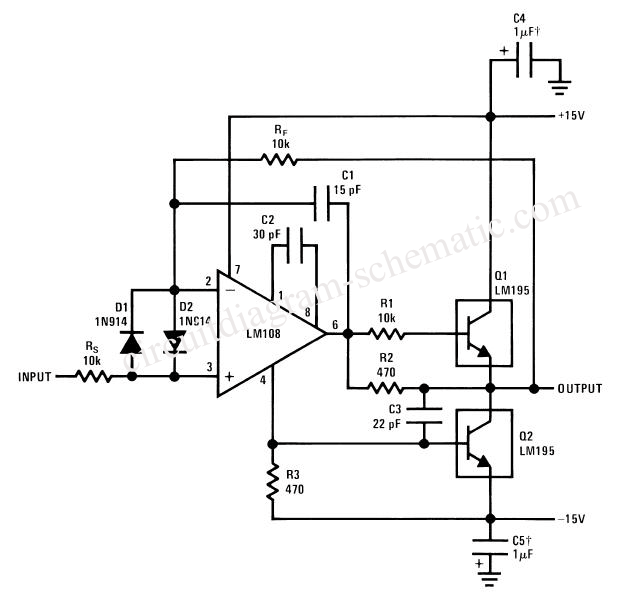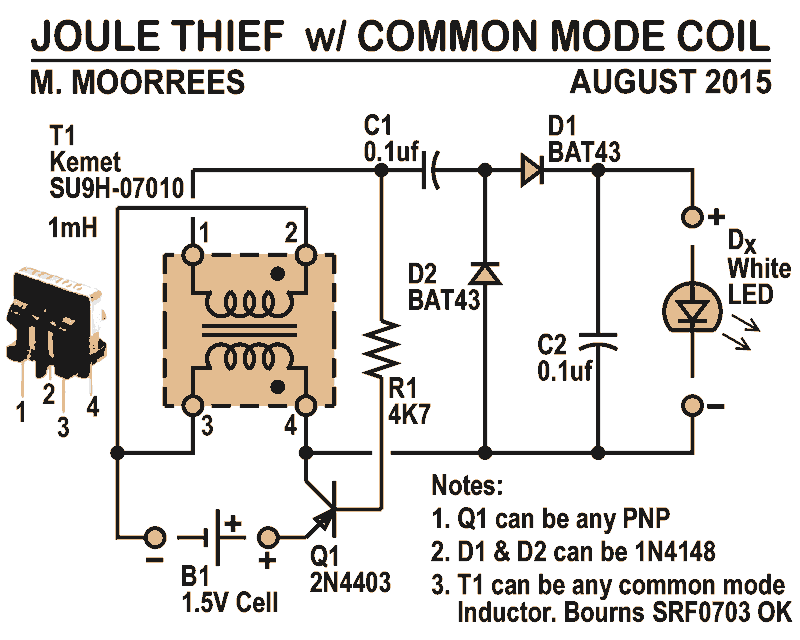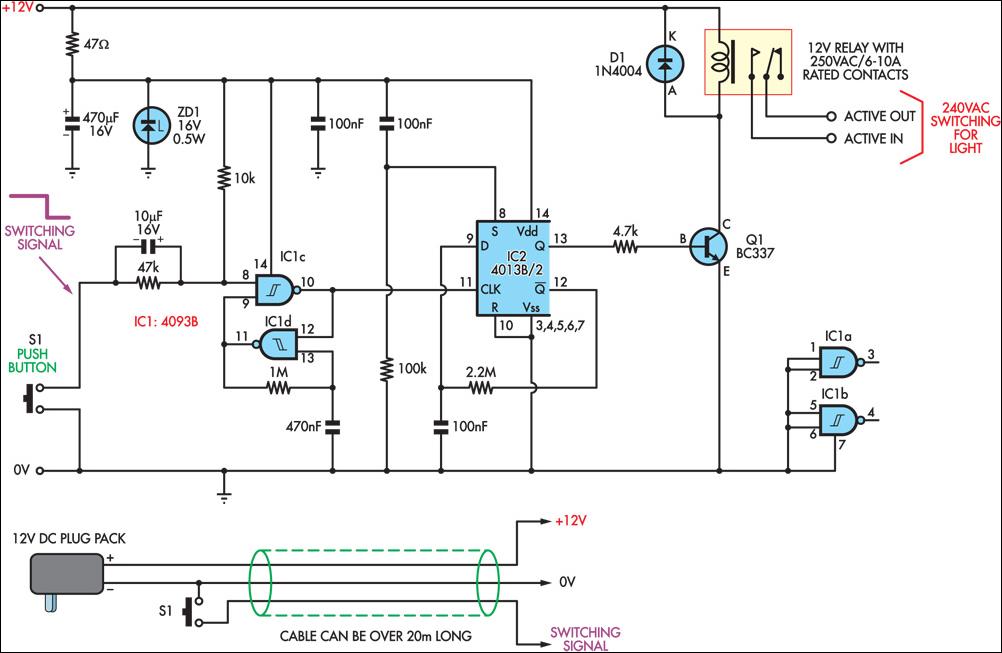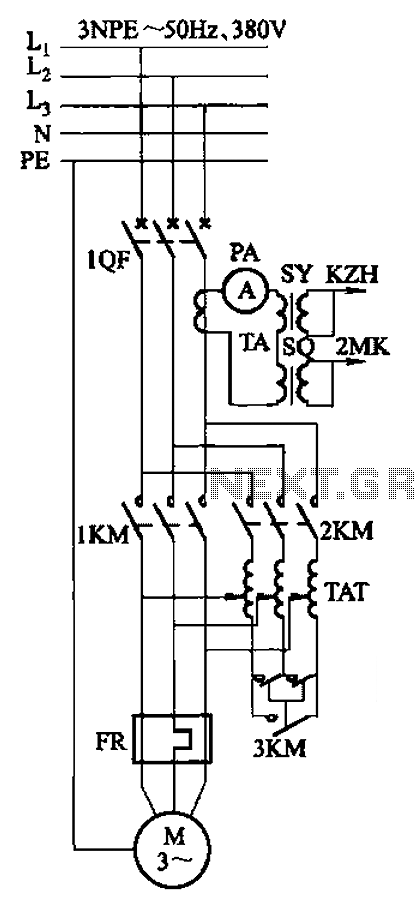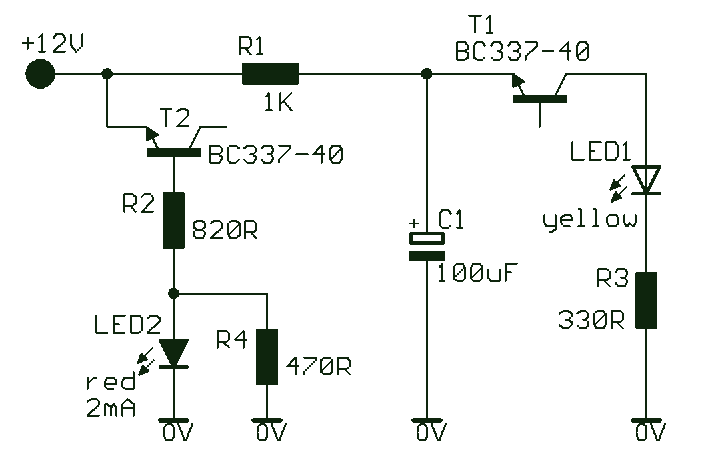
maximum minimum voltage indicator
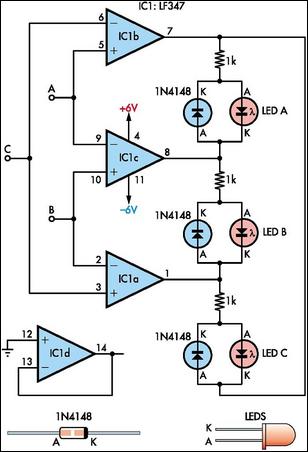
This circuit indicates which of three voltages, ranging from approximately -4V to +4V at points A, B, and C, is the highest by illuminating one of three indicator LEDs. Alternatively, it can be configured to indicate the lowest of the three voltages or to indicate both the highest and lowest voltages. Operational amplifiers IC1a, IC1b, and IC1c are configured as comparators, while the three indicator LEDs, along with their series 1kΩ current-limiting resistors, are connected to the outputs of the op-amps to perform the necessary logic functions. For instance, LED A will illuminate only when pin 8 of IC1c is low (indicating A is greater than B) and pin 7 of IC1b is high (indicating A is greater than C). Similarly, LED B will light up only when pin 8 of IC1c is high (indicating B is greater than A) and pin 1 of IC1a is low (indicating B is greater than C). LED C operates in a similar manner if the voltage at C is the highest. It is important to note that if all the LEDs and their parallel 1N4148 diodes are reversed, the circuit will indicate the lowest of the three input voltages. Additionally, if each 1N4148 diode is replaced by an LED, the circuit will indicate both the highest and lowest inputs.
The circuit utilizes three operational amplifiers that serve as voltage comparators to determine the relative magnitudes of the three input voltages. Each op-amp is configured to compare two input voltages at a time, with the output indicating which input voltage is greater. The outputs of these comparators are connected to the anodes of the respective indicator LEDs, while the cathodes are connected to ground through 1kΩ resistors, limiting the current to safe levels for the LEDs.
When voltage A is greater than both B and C, the output of IC1c (which compares A and B) will be low, and the output of IC1b (which compares A and C) will be high, resulting in the illumination of LED A. Conversely, when B is the highest voltage, the outputs will indicate accordingly, lighting LED B. The same logic applies to LED C when C has the highest voltage.
The design also accommodates alternative configurations. By reversing the connections of the LEDs and the 1N4148 diodes, the circuit can be modified to indicate the lowest voltage. This is achieved by making use of the inherent characteristics of the comparators, which will now indicate the condition where all inputs are compared in reverse. Furthermore, if the 1N4148 diodes are replaced with additional LEDs, the circuit can simultaneously indicate both the highest and lowest voltage inputs, providing a versatile solution for voltage level indication in various applications.
This circuit is particularly useful in applications where monitoring multiple voltage levels is critical, such as in battery management systems, voltage monitoring in power supplies, or any scenario requiring comparative voltage analysis. The simplicity of the design, combined with the flexibility of configurations, makes it a valuable tool in electronic circuit design.This circuit indicates which of three voltages in the range from about about -4V to about +4V - at A, B and C - is the highest by lighting one of three indicator LEDs. Alternatively, it can be wired to indicate the lowest of three voltages or to indicate both the highest and lowest voltages.
Op amps IC1a, IC1b & IC1c are wired as comparators, whil e the three indicator LEDs and their series 1kO current limiting resistors are strung across the op amp outputs to implement the appropriate logic functions. For example, LED A will light only when pin 8 of IC1c is low (ie, A greater B) and pin 7 of IC1b is high (ie, A greater C).
Similarly, LED B will light only when pin 8 of IC1c is high (ie, B greater A) and pin 1 of IC1a is low (ie, B greater C). LED C works in similar fashion if the voltage at C is the highest. Note that if all the LEDs and their parallel 1N4148 diodes are reversed, the circuit will indicate the lowest of the three input voltages.
And if each 1N4148 diode is replaced by a LED, the circuit will indicate both the highest and lowest inputs. 🔗 External reference
The circuit utilizes three operational amplifiers that serve as voltage comparators to determine the relative magnitudes of the three input voltages. Each op-amp is configured to compare two input voltages at a time, with the output indicating which input voltage is greater. The outputs of these comparators are connected to the anodes of the respective indicator LEDs, while the cathodes are connected to ground through 1kΩ resistors, limiting the current to safe levels for the LEDs.
When voltage A is greater than both B and C, the output of IC1c (which compares A and B) will be low, and the output of IC1b (which compares A and C) will be high, resulting in the illumination of LED A. Conversely, when B is the highest voltage, the outputs will indicate accordingly, lighting LED B. The same logic applies to LED C when C has the highest voltage.
The design also accommodates alternative configurations. By reversing the connections of the LEDs and the 1N4148 diodes, the circuit can be modified to indicate the lowest voltage. This is achieved by making use of the inherent characteristics of the comparators, which will now indicate the condition where all inputs are compared in reverse. Furthermore, if the 1N4148 diodes are replaced with additional LEDs, the circuit can simultaneously indicate both the highest and lowest voltage inputs, providing a versatile solution for voltage level indication in various applications.
This circuit is particularly useful in applications where monitoring multiple voltage levels is critical, such as in battery management systems, voltage monitoring in power supplies, or any scenario requiring comparative voltage analysis. The simplicity of the design, combined with the flexibility of configurations, makes it a valuable tool in electronic circuit design.This circuit indicates which of three voltages in the range from about about -4V to about +4V - at A, B and C - is the highest by lighting one of three indicator LEDs. Alternatively, it can be wired to indicate the lowest of three voltages or to indicate both the highest and lowest voltages.
Op amps IC1a, IC1b & IC1c are wired as comparators, whil e the three indicator LEDs and their series 1kO current limiting resistors are strung across the op amp outputs to implement the appropriate logic functions. For example, LED A will light only when pin 8 of IC1c is low (ie, A greater B) and pin 7 of IC1b is high (ie, A greater C).
Similarly, LED B will light only when pin 8 of IC1c is high (ie, B greater A) and pin 1 of IC1a is low (ie, B greater C). LED C works in similar fashion if the voltage at C is the highest. Note that if all the LEDs and their parallel 1N4148 diodes are reversed, the circuit will indicate the lowest of the three input voltages.
And if each 1N4148 diode is replaced by a LED, the circuit will indicate both the highest and lowest inputs. 🔗 External reference
